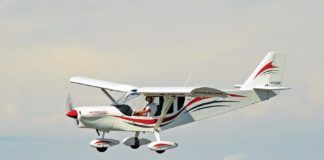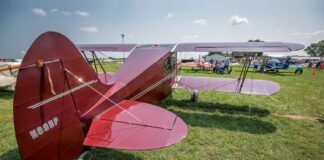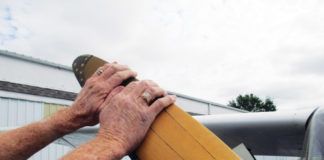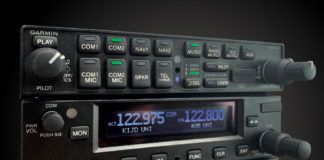Everyone who builds an airplane is-sooner or later-going to need an engine. Like death and taxes, no one can escape the decision of what to use to power their dream machine. For many, the choice is obvious-they look at what the designer of their kit or plans recommends, and order one up. After all, the process of aircraft design traditionally starts with the choice of engine, and the aircraft is sized and designed around that choice. It is hard to beat the designer’s recommendation if the goal is to replicate the prototype’s performance.
Yet many look far and wide for alternatives-mostly because they want to do something different with the airplane. They might be taking an early homebuilt design and updating it to modern standards for ease of maintenance and operation. They might be taking a design that started out life as a fun, local machine, and re-purposing it as a cross-country cruiser. They might be building a basic airframe that they desire to use as a test bed for new ideas (and new powerplants). All of these are legitimate reasons to go shopping for alternatives to the factory design-and all will produce an airplane that is different than what the original designer intended. There is nothing wrong with that, but the potential downsides need to at least be acknowledged. Those downsides include pushing the aircraft’s envelope in one area at the expense of others. Aircraft design is the art of compromise, and some people prefer different choices in their compromises.
This year, instead of publishing a guide for purpose-designed aircraft engines one month and conversion engines the next, we’re presenting all of the engine options we could find in one issue. The truth is, there is simply no reason to emphasize a separation of the choices-all of their pluses and minuses, their pros and cons. It is fairer to show the field as a unified whole, even though we might separate them simply because of the engineer’s penchant for categorization. We stopped using the term “alternative” to describe many engines last year, because, quite frankly, we couldn’t agree on what they were alternatives to. It seems silly (in the Experimental world) to compare everything to two known name brands-and with new designs gaining in popularity, we felt that leveling the playing field was important.
We do still, however, separate engines into those designed from the ground up as airplane engines, and those that began life as something else and have been repurposed to leave the surface of the earth. Many of the early homebuilts were designed around converted auto engines, and there should be no stigma attached to this genesis. It should be acknowledged, of course, because it does attach caveats to the overall powerplant system used by the aircraft-but it is not necessarily a negative mark in the ledger.
Engineering designs are constantly evolving (in all fields of human endeavor), and there is nothing wrong with designs being repurposed. We believe that if there is a stigma attached to conversion engines, it is simply because of the poor record exhibited by many engines for many decades-some because of poor design work, some because the basic engine chosen was not adequate for the task that it was being asked to perform. We at KITPLANES-at least as long as I am here-do not have an editorial bias against conversions. We do, however, believe that in order for an engine to be considered reliable (whether it is purpose-built from the ground up for aircraft, or if it is converted), it needs to accumulate several hundred thousands of hours of testing and in-service operation to build its own reputation for reliability. The amount of time spent getting the engine right for aircraft use does not, inherently, make it an aircraft engine. It is simply an indication of how hard it is to get them right-regardless of the initial purpose of the core design.
Engines are not considered reliable because someone claims that they are reliable. They build that reputation in the community by demonstrating trouble-free operation for a long time. You cannot build a reputation by fiat-it must be earned. This has been true of purpose-built aircraft engines as well as conversions. It is a conundrum for a new engine program, of course-you have to get time in service to be considered reliable. But how can you get people to consider it reliable enough to buy to get it in service without the reputation? That requires people to be flying it! The answer is that the engine builder needs to be up front with customers that it is new, that problems can be expected, but that with time, the bugs that can’t be predicted will show their heads and be worked out.
The aviation market is a skeptic’s market-because the stakes are high. An engine failure in an automobile is rarely more than an inconvenience. In an airplane, it is life-threatening. This is why a new engine program is looked at with guarded glances. We all would like to see progress, but also want to keep the risk level as low as possible. That is human nature-and a reality within the pilot community. Failures in new propulsion systems are rarely predicted; the details of a failure usually come as a surprise to everyone. That only makes sense since if the problem could have been predicted, it would have been solved before it reared its ugly head. Some categories of problems are expected-things like vibration, mixture stability, and electronic reliability. But others are elusive and pop up differently in every test program. This is where the hundreds of thousands of hours of operation come in-a new design needs time to show its potential issues.
Choosing an engine is one of the major decisions an airplane builder must make, and it accounts for over a third of the total cost of the completed aircraft in most cases. This month’s guide will help introduce you to the spectrum of contenders, but we recommend that once you have narrowed the field a bit, you take the time to do your own due diligence to determine the suitability of the machine for your particular goals. Choose wisely. Reliable, steady power is important-especially for those of us who leave the ground far behind.
Welcoming the New Guy
Dave Boeshaar is a typical builder-he’s been climbing the learning curve that comes with building your first airplane and learning things along the way. He’s not a pro builder, doesn’t have a lifetime of experience putting airplanes together (or maintaining them), and discovers new things every time he steps into the shop. Like I said-a typical builder! KITPLANES has a lot of experienced contributors, but we thought that the perspective of a new guy-seeing the challenges and tricky bits of airplane construction with a fresh set of eyes-has value for the many readers contemplating getting in the fray themselves.
How do you know when to use zip ties and when you should lace? Is this a place where you should squeeze a rivet, or should you shoot it? And what about all that wiring-how do you approach all that spaghetti? Dave will help the new guys by looking at the problems as someone who has recently faced-and learned how to overcome-them.
It is easy for experience to get in the way of seeing problems from a rookie’s perspective, so Dave is going to spend a little time each month showing us all the things he has discovered as he brings his airplane from a box of aluminum to flying status. We hope you’ll enjoy this new perspective. And who knows? Even the experienced among us can learn a few things.

![]()
Paul Dye retired as a lead flight director for NASA’s Human Space Flight program, with 40 years of aerospace experience on everything from Cubs to the space shuttle. An avid homebuilder, he began flying and working on airplanes as a teen and has experience with a wide range of construction techniques and materials. He currently flies an RV-8 that he built in 2005 and an RV-3 that he recently completed with his pilot wife. A commercially licensed pilot, he has logged over 4500 hours in many different types of aircraft. When not writing on aviation topics, he consults and collaborates in aerospace operations and flight testing projects.




